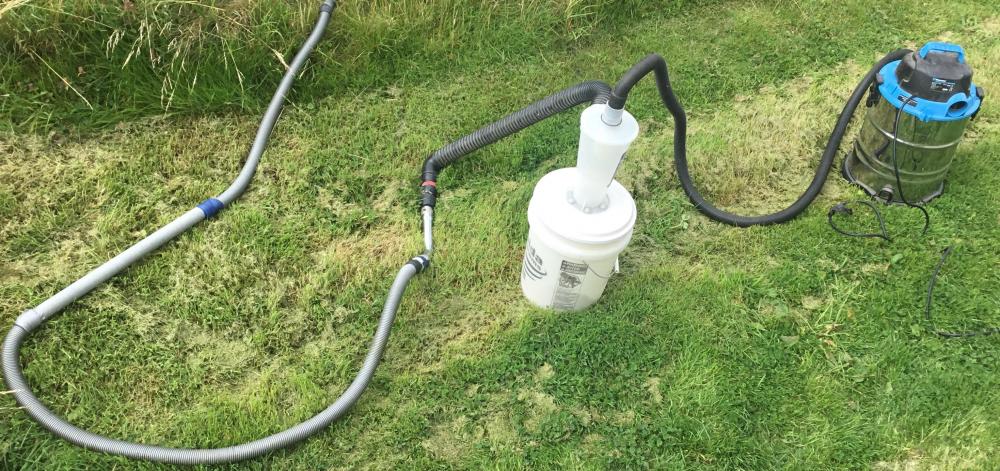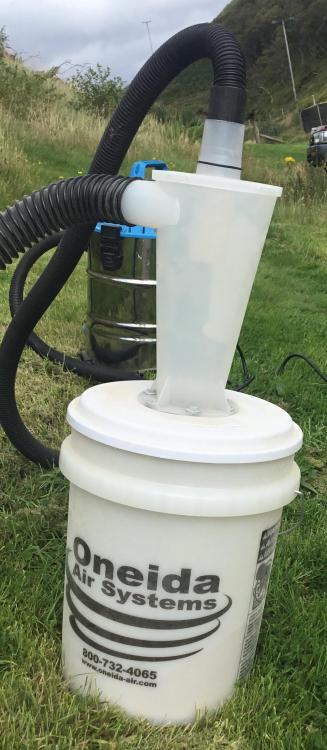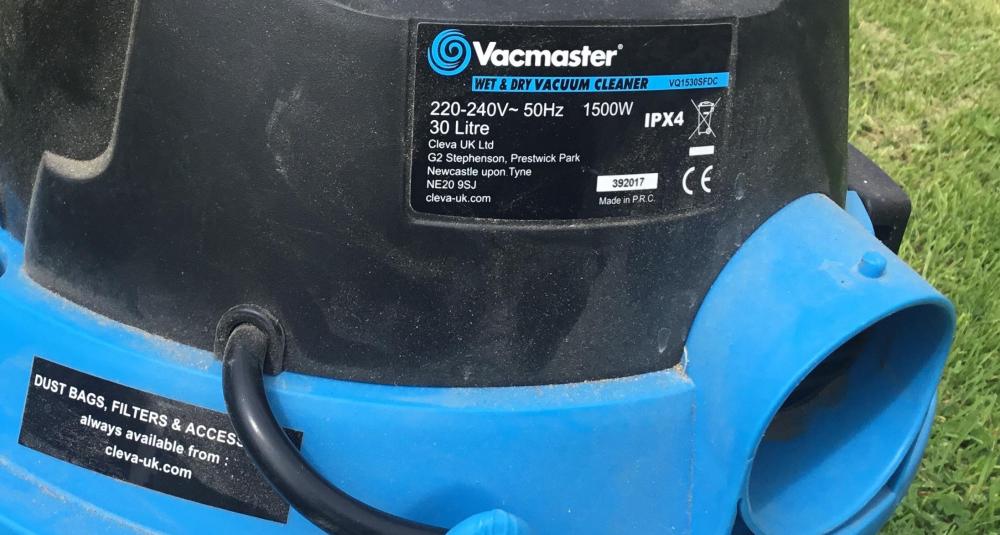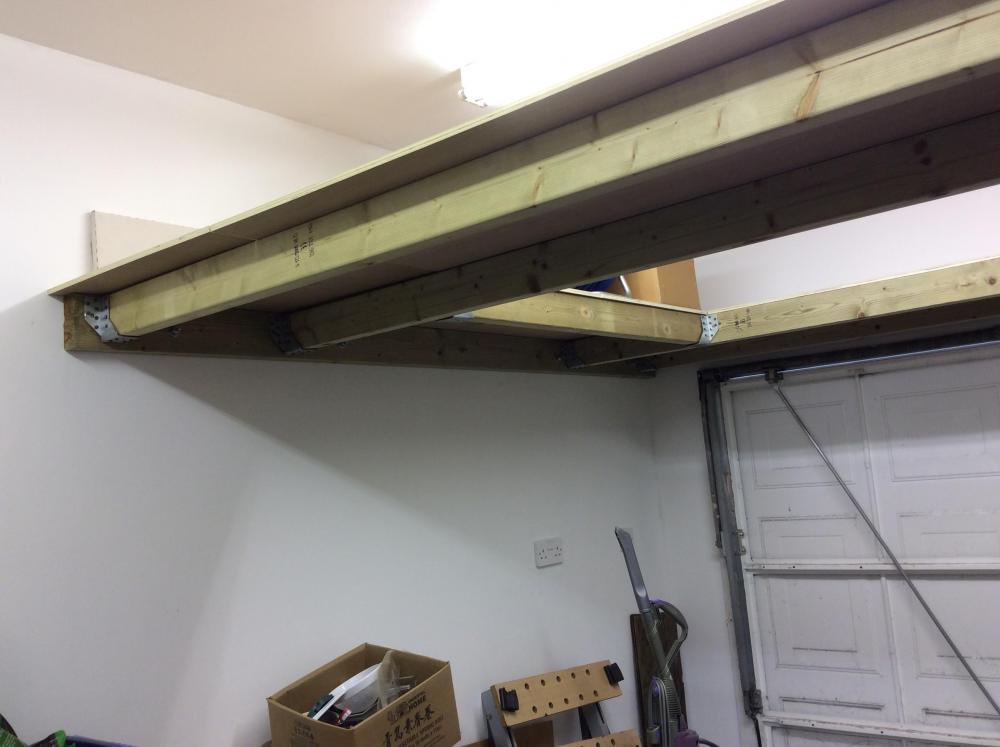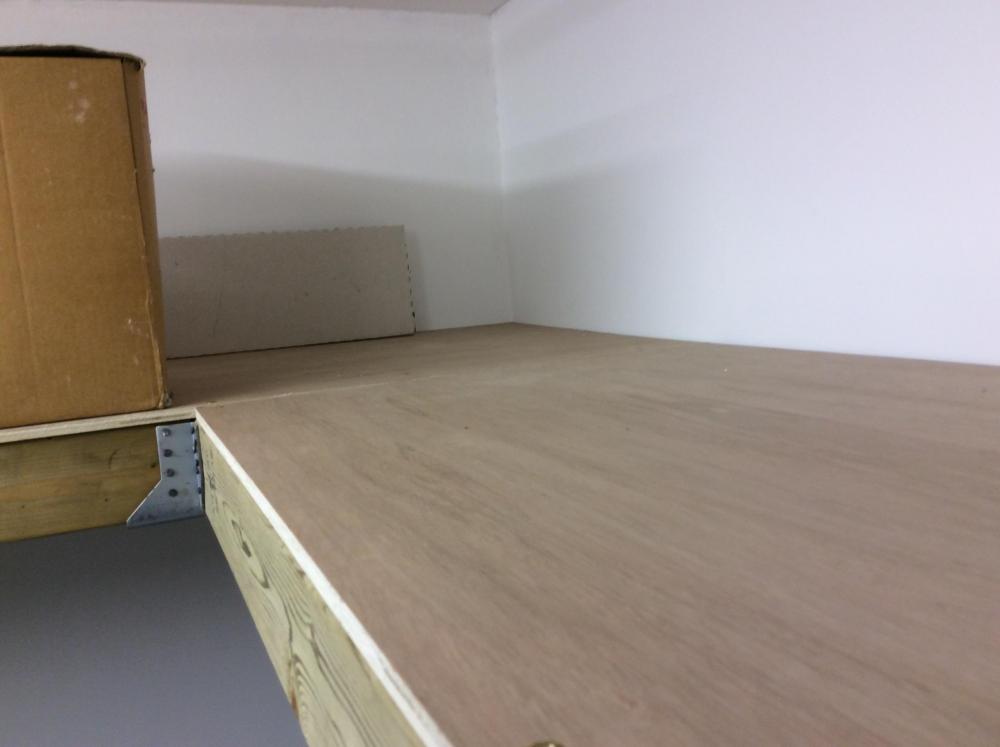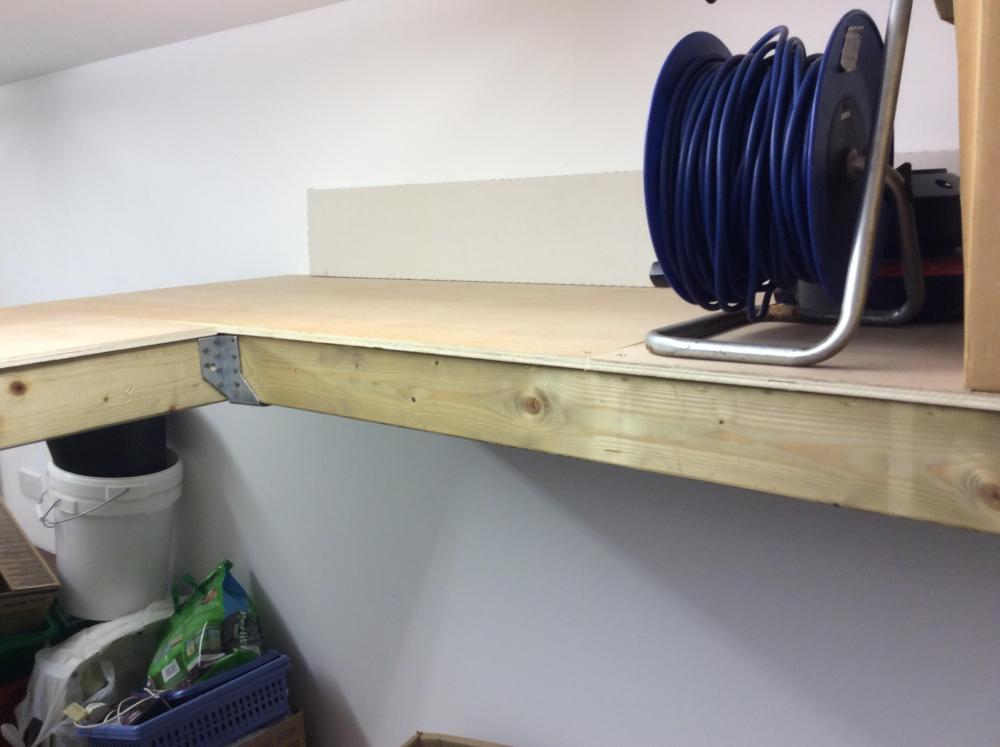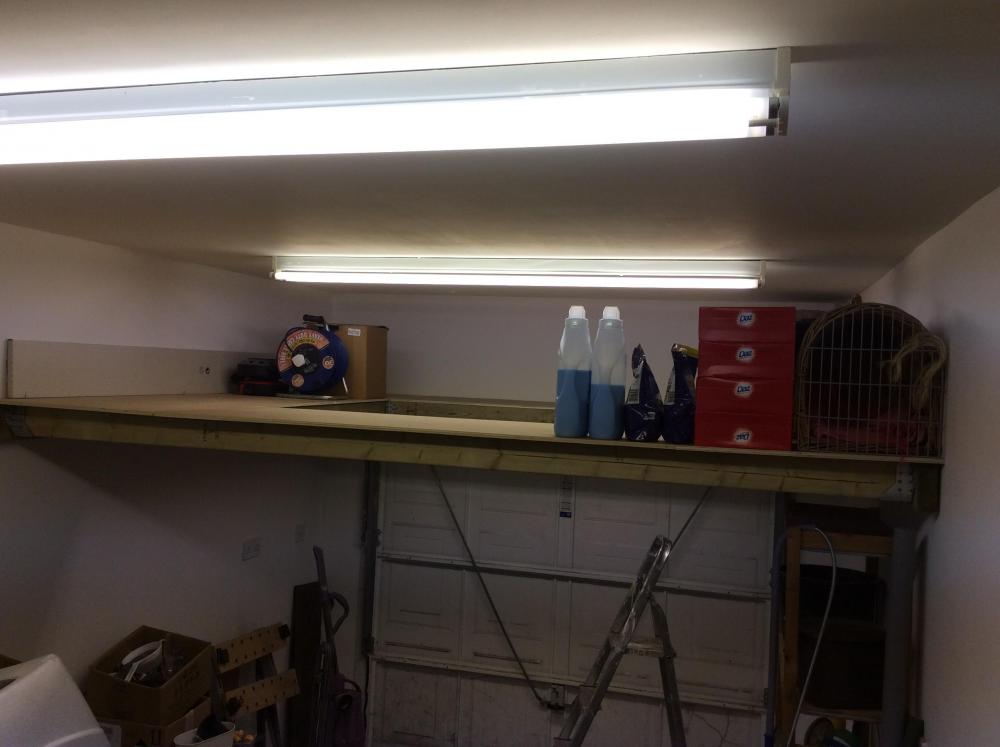Leaderboard
Popular Content
Showing content with the highest reputation on 08/23/19 in all areas
-
We received a parcel this morning containing all our invoices and a note saying the amount claimed will be paid in the next 21 days We submitted on June 13 So not that long a wait To help others with some of the uncertainties The build has taken us 24 months to move into a 90 % complete house By the time we moved in we had been paying a reduce rate of Counsul tax on a inhabitable house Even though we where paying full CT on our home Thats another story We moved in in December But wasn’t ready for sign off I built my infamous Timber Disabled access in March in order to be signed off BC duly signed us off in May With a footnote saying Landscaping incomplete Temporary DA access Its very difficult to know how long you can leave your vat claim after moving in But we carried on purchasing items for the build on pretty much a daily basis Two of the invoices where for the day of the claim Thankfully all been pretty straight forward2 points
-
My trusty albeit much abused wheelbarrow. Rotary wire brushed and flap disc'd the frame. Got No2 daughter to etch prime it with a rattle can yesterday. Then in a big clear up I came across some green gloss paint left by the previous owner. Opened it up to an oil slick on top. Mixed it up and it was lumpy like porridge! Today I stuck it through a kitchen sieve (sanctioned) and employed some slave labour: But what to do with the old galvanised tub? It's rotted thru at 4 points. Let's be honest, cutting out a rectangle and TIG welding a new panel in is overkill. Thinking just 4 big square washers maybe bonded with CT1? Quick rotary wire brush and galvanising spray underneath:2 points
-
I have got one of these, the GREAT thing about this is that it blows or sucks and has a power take of for hooking up small tools like sanders, planers etc so it comes on automatically when the sander is switched on. I use it on my big table saw and for sucking up building waste and sawdust. The Amazing bit of plastic / drum (buy from Rutlands or some other place but there one is great as you can see when it’s full and if it’s working) Is what goes between the hoover and the the sucking end, it collects about 98% of all the stuff so you NEVER need to replace bags ! It has saved me a fortune and is one of my best bits of kit. I could not be happier with the whole set up, I just join old bits of hose together depending on the job, you can get them for nothing from a dump recycling centre ! Or again buy a hose adapter set from Rutlands or similar. I have put this through it’s paces over the last few years and it’s still on it’s first bag and has never missed a beet. Great kit and I am sure it will do what you need. I have used a whole bunch of hoovers and this one is by far the best I have got.2 points
-
Regarding press bias - all news outlets have a brand that they filter the same story through through whether it's sensational or sober, left or right, etc. You, as the reader, choose the brand that aligns with your views and bias and will often reject other news brand's interpretation of the same story as wrong. Regarding accuracy, the press is primarily in the business of processing and selling content quickly and don't have the time or expertise (or desire) to deeply analyse every story whether science based or 18th century classical literature - story gets written, sub editor plucks a headline that may or may not reflect the content and away it goes. So you'll always find endless examples of poorly researched, interpreted or written articles in any paper on any subject. Unless you want your news delivered in a peer reviewed journal, 18 months after the event, then this will never change.2 points
-
Four spades of silver sand 1 white cement 1 spade Of hydrated lime NO plasticiser2 points
-
2 points
-
She's too busy keeping me in expensive tools and spares for my digger. Top lass!1 point
-
Vintage depocsterer that. Crying out for a bath in hot citric acid to bring it back to it's former glory.1 point
-
My dad had a set of nutcrackers that looked very much like that. Well that at least was what he used them for.1 point
-
No, not your fault, as the regs are just a wee bit obscure. There are two different requirements, the most significant one (in terms of sizing the unit) is the background whole house ventilation rate. This is no less than 0.3l/s per m² of floor area, and refers to either the fresh air supply flow rate, or the extract flow rate, for the whole house (extract should be equal to supply). So, using our 130m² house as an example, the whole house ventilation rate should be no lower than 0.3 x 130 = 39l/s The other criteria that have to be met are the minimum extract flow rates from the kitchen (13l/s), bathrooms (8l/s), utility room (8l/s) and WC (6l/s). In our case we have a kitchen, two bathrooms, a utility room and a downstairs WC, so the sum of the extract rates from these rooms needs to be 13 + 8 + 8 + 8 + 6 = 43l/s. However, it's allowable to have the MVHR on boost to meet the extract flow rates, (whole house rate has to be at the background fan speed), so if you can't quite meet the minimum extract rates at the normal background fan speed it is acceptable to boost the unit to show compliance. In practice I found that we got around nearly 46l/s when running at the background fan speed, after I'd balanced the system, and this exceeded the figures required for the rooms with an extract. Balancing has two aims, to match the fresh air flow rate for the whole house to the extract rate for the whole house (ideally within about 5% or better), and to set the extract flow rates in order to obtain the building reg minimums for each extract room. I found the latter the hardest part, as I needed to throttle our kitchen extract down a lot, as well as the downstairs WC and utility room, in order to get enough extraction from the bathrooms.1 point
-
check out the trend unit --for use with big routers etc -1.5kw vac +2kw tool --no problem https://www.trenddirectuk.com/t31a-class-l-wet-dry-1400w-dust-extractor-240v1 point
-
There are several contrasting examples on this thread. The idea is that it is a tool to think about what you want and need, that you can then feed into the process, and come back to to keep yourselves on track.1 point
-
https://www.ebay.co.uk/itm/Vacuum-Auto-Switch-Box-Control-your-vacuum-with-your-power-tool-iVAC-13A-UK-/131926870360 Or make your own:1 point
-
Have a think about integrating the vacuum cleaner with the tools that will be used around the build. And insist that trades use and integrated vacuum cleaner with their tools when their work is likely to create dust. So, the hose diameter - or the availability of an appropriate adapter - between tool and vacuum cleaner is more important to you than for many. Your first guess of my choice is likely to be correct.1 point
-
Let's be clear - your building inspector will look for a bit of paper that says the MVHR installation is compliant with Part F. This paper can be complete fiction or the result of a highly skilled calibration exercise - it does not need to be issued by a professional / qualified person. BC will never check that its correct (doing so would be impractical anyway). Now, as the inhabitant of the house you have a legitimate concern that the system is working properly. You can either pay someone to do this or do it yourself - depends what you think your time is worth. If you go as far as installing the system yourself then this last step is pretty trivial - commissioning sounds complicated but essentially it means turning it on and balancing the intake / extract airflow at plenums plus setting the fan speed at the unit to deliver the min / boost airflow. Now, I installed my system DIY and it was almost 2 years later when I bothered to check that it was balanced (needed to create that bit of paper for the BCO). So I borrowed the measuring tool from the forum, read the posts that explained what to do, ran around and took measurements, tweaked plenums and fan speeds, measured again and satisfied myself that it was good enough - wrote it all down and gave bit of paper to BCO who never mentioned it again. A few hours work including tea breaks. TBH - there was no noticeable difference at all before and after (even the measurements were only 15% or so out initially) so how you could ever tell that a paid installer had really done their job correctly is beyond me. Airflow from MVHR is very low by design. What's more important with a MVHR system is regular cleaning and replacement of the filters - put reminders in your calendar as it's easily forgotten once you're busy with normal life again1 point
-
Got to be a Numatic product, I have used a Henry for essentially building work and with good bags and keeping it well maintained he has been a beast, we now have a George and a Hetty. I would not recommend the Henry quite for your level of stuff, he could cope, but the bag would fill quickly. If I have major stuff to do I get the 15litre bag for George and use him, I managed to fill Henry right up and all the way along his pipe with sawdust once and it was still vacuuming away no bother - sure it was reduced but it was impressive. Have a look at this stuff - there is a reason you see these guys all over sites, schools, airports etc. they are good. A standard Henry is HEPA 15 I think which is 99.99???? and then there is a HEPA 17 which is 99.999995% which is basically the particle arrestance ability. For your needs, you can get ones that are even designed to vacuum up asbestos dust and will not re-emit the dust into the room - so the point is, if you got one, keep it pretty clean, you could then end up with a really really handy machine for bigger cleaning jobs which will give you better dust control than any domestic vac you can buy - Dyson - eat your heart out. https://www.numatic.co.uk/product-subranges.aspx?r=6 You can get the big blue one for about £200 which is 20litres.1 point
-
We have an Einhell 1500w wet and dry that seems to work well and looks quite similar to the Titan one on Screwfix for £891 point
-
The best one that we have had for coping with what you describe and price have been Nil Fisk1 point
-
On a sample of 2, Green building store and Enhabit were both very happy to quote for design, supply and commissioning. Neither seemed particularly interested in doing the install work. If you have a radial topology the install is very simple. However looking at you linear layout a trunk and branch might be more efficient. Still not terribly complex to install from what GBS said.1 point
-
The garage would not normally be recommended place for the MVHR as it's outside the thermal envelope: it works more efficiently to have it inside the envelope.1 point
-
1 point
-
Passivhaus institute, that make the rules of passive house and who's database you linked above.1 point
-
No, there's no need for any third party involvement. I wrote a brief report covering it for building control, but frankly they weren't interested in it at all, so I think I may as well not have bothered.1 point
-
It's pretty straightforward. My blog has details of how we installed our MVHR and commissioned it.1 point
-
The NIBE one you link has Heat recovery rate: 79 % What am I missing? Also note, like windows, PHI a different way of calculating effeceiency to everyone else so either just use their numbers or the manufacturer numbers but don't try and compare across them1 point
-
Adjustment depends on the parts chosen. Ours uses throttle plates fitted in the distribution plenums to throttle down each duct, other systems may use adjustable ceiling terminals. Adjustable ceiling terminals may possibly be slightly noisier, as the flow velocity ends up increasing, but they are a lot easier to adjust. The throttle plates are a PITA to adjust, but in theory reduce flow noise, because the local velocity increase they create is in the plenum chamber, so well away from the rooms. The total background rate often dominates, and is the rate that the system needs to deliver when on its normal setting. The total airflow in and out should be equal and can either be the background rate or any other setting. In addition, the system needs to be able to achieve the required extract rates for the kitchen, bathrooms, WC and utility room. Often this rate may be met in background ventilation mode.1 point
-
Yes, several here have done DIY install and commissioning. Not a difficult job, but the commissioning and balancing is a bit tedious. Better to DIY simple and tedious stuff, IMHO, rather than pay someone a lot of cash. I probably spent around three or four days on the MVHR installation and commissioning.1 point
-
But the stupid electorate rejected the one and only chance they were ever offered when the LibDems proposed an AV system. I doubt we will get another chance to change the system.1 point
-
1 point
-
Thanks for these ideas. I will have to think about what I will do. Lighting using LED lights is the way to go for sure. The twin fluorescent strip will be near the middle of my planned shelving. So I will augment it with some led once shelving is up. Well the shelving is up and all good. I have been up on the shelves while I was fixing the shelf to the joists and no movement at all. I also hung from each joist and they barely bent at all. in the end I went with 120x47x2400 wall plates and 95x47x2700 joists (cut down from 3000 to fit) using M12x160 resin anchors five per wall plate, 12mm hardwood ply for shelves fixed down with 5.0x40 twin cut multi purpose screws - 6 per sheet. I am very pleased with the result.1 point
-
If the peak of your loft from the joists to the top of the roof is less inside than about 9ft, you will struggle to get a non-compromised room or two in, without a new or raised roof. Can still do it, but more difficult. Useful rule of thumb. Measure it. It is because your roof will need a lot of insulation, plus the thickness of a new floo4 and reinforcement. And welcome. Your next step is t9 do the homework to the point where you have a confidence in evaluating what people tell yo7, and judging their recommendations wrt your needs. A good place to start is to work to create a one paragraph then one page ‘statement of requirements’. Ferdinand1 point
-
I would make your first port of call that neighbour. Have a good look at what they have done and see if it would meet your needs. Ask them how much it cost in total. Find out who their builder and architect were and importantly would they recommend them. When I first built an extension 20 years ago I did more or less that. What surprised me is most people I spoke to would not recommend the builder they had just used. It took some while before I found a builder that actually came with a recommendation.1 point



